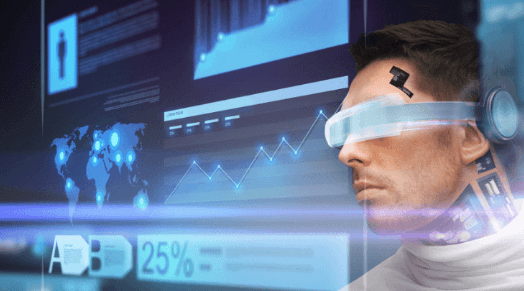In the rapidly evolving world view, there is a need for new forecasting techniques that are resilient and flexible. The change is required more than ever before since, in the current times, an incorrect decision in any of the domains such as logistics, production, inventory, and retail, to name a few, can pose an existential question to any organization.
Challenges with conventional forecasting models
Any brand throughout its business journey makes decisions to its benefit based on the guiding principles of past data. It is well experienced, as the COVID-19 situation unfolded throughout the world, it not only affected normal life, but also changed the behaviour and psychology of humans. Some changes in consumer behavior like shift to online platforms are more permanent than changes like focused spending. These changes were so quick, that businesses which relied only on the past, saw great variance between forecasts and the actuals. In such scenarios, no concrete decisions can be made based on these models as it would have far reaching impact on the top line as well as bottom line of the brand. The common reasons for most of the forecasting models to fail are lack of indicators to factor in sudden events, heavy dependency on earlier sales patterns, confined seasonal patterns and so on. To redefine this conventional approach, it is necessary to account the variables linked with these changes to provide better insights into changing trends with a reasonable accuracy and lead time.
The change indicators
Leading and lagging indicators are types of technical indicators that either give an indication of what could happen next within the markets or provide information on what has already happened. Leading and lagging refers to whether the indicator moves before or after another metric, such as price action.
To identify the correct indicators for your business, asking the right set of questions is the key. Do financial, economic or un-conventional indicators emerge as potential business influencers?, Here are some common indicators and their influence area –
Financial Indicators indicate trends in the consumer buying capacity while economic Indicators indicate industrial production rate and how the market is constantly changing. Un-conventional indicators like google mobility index indicate people movement around recreational centers, shops, medical facilities etc. While economic indicators are no-brainers, they lack localization and are typically published after-the-fact whereas indicators like Google mobility are localized and available frequently. Hence considering a right mix of both ensures quick learning and implementation mechanism.
For many indicators, the relationship with sales is dynamic and evolving due to the wavering market conditions. Investigating the trends of these lagging and leading indicators brings out fascinating insights about their true nature and cause of the change in pattern.
What indicators should you consider?
Leading indicators may be able to follow the current market dynamics rapidly and provide foresight in business well in advance. Hence identifying and using the relevant leading Indicators for business forecasting in real-time can significantly improve the model’s predictive power and can provide crucial accuracy gains. These indicators should be well supported by business justifications and not based on spurious statistical correlation.
Real-life examples:
For example, Airline passengers can be an indicator of luxury product sales. As more people visit airports, more is the footfall for the hub of luxury brand stores, leading eventually to a higher demand for these products. There is a time gap between the booking of the airlines and the sales, and therefore, the airline passenger could be a useful leading indicator.
Another example would be lockdown index as an indicator of luxury product sales. As the lockdown index decreases, the number of people traveling increases, leading to higher demand for products at stores. Again, there is a time gap between lockdown index relaxation and travel plan execution, providing enough time for the companies to prepare for upcoming surge in demand.
Practical implementation of such a non-conventional model for a brand retailer, shows some fascinating correlations like increase in stock market’s S&P 500 performance in the past three weeks positively impacts its current sales while increase in lock down index in the past two weeks decreases the current sales. Similarly google mobility indicators like percentage change from baseline in movements amongst parks, grocery stores, and pharmacies also impacts sales.
To identify these leading indicators, one should study correlation pattern between sales and various time lags of these indicators. As this relationship rapidly changes with time, these observed indicators will constantly influence sales showcasing their highly predictive nature. Once the right indicators are identified, data availability could be the next challenge. Data availability challenges can be more often resolved using proper data mining, modelling and feature engineering techniques.
What are the trade-offs:
A trade-off between business guidance and correct statistical models can create desirable forecast with added confidence using model evaluation metrics like accuracy or mean absolute percentage error (MAPE). Creating a transparent framework can offer significant business insights for managerial adjustments to the forecasts and the eventual acceptance of the forecasts in the organization. Since the data required for this type of modelling needs to be recent and real time, the practical usefulness of this non-traditional forecasting framework is limited to shorter horizons. The framework has the potential to impact the business positively given traditional models may fail to cope with the situations arising in uncertain times like COVID pandemic. The accurate predictions will drive in-time decision making that may lead to better product availability and higher customer satisfaction.
To build a forecasting model that may impact your business positively, be observant and identify the events, triggers or things impacting for your business. Analyse your position in market and changing sales pattern within your consumer behaviour.
Infocepts specialises in solving a variety of data science problems using techniques like Predictive Analytics, Forecasting, Cluster Analysis, NLP, Recommendation Engines, Computer Vision and many more.
Get in touch to know more!
Recent Blogs
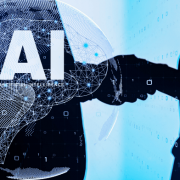
Bots to Brains: How Agentic AI is Changing the Game
July 8, 2025
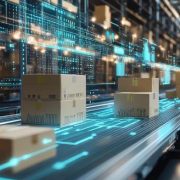
The Future of Supply Chains Is AI-Driven—Is Your Business Ready to Embrace the Change?
July 2, 2025
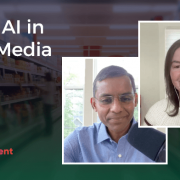
What Retail Media Can Learn from Instacart’s AI Strategy
June 24, 2025
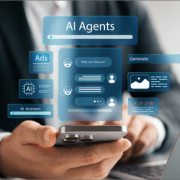
Beyond Chatbots: How Agentic AI Is Automating High-Stakes Business Decisions
June 11, 2025


